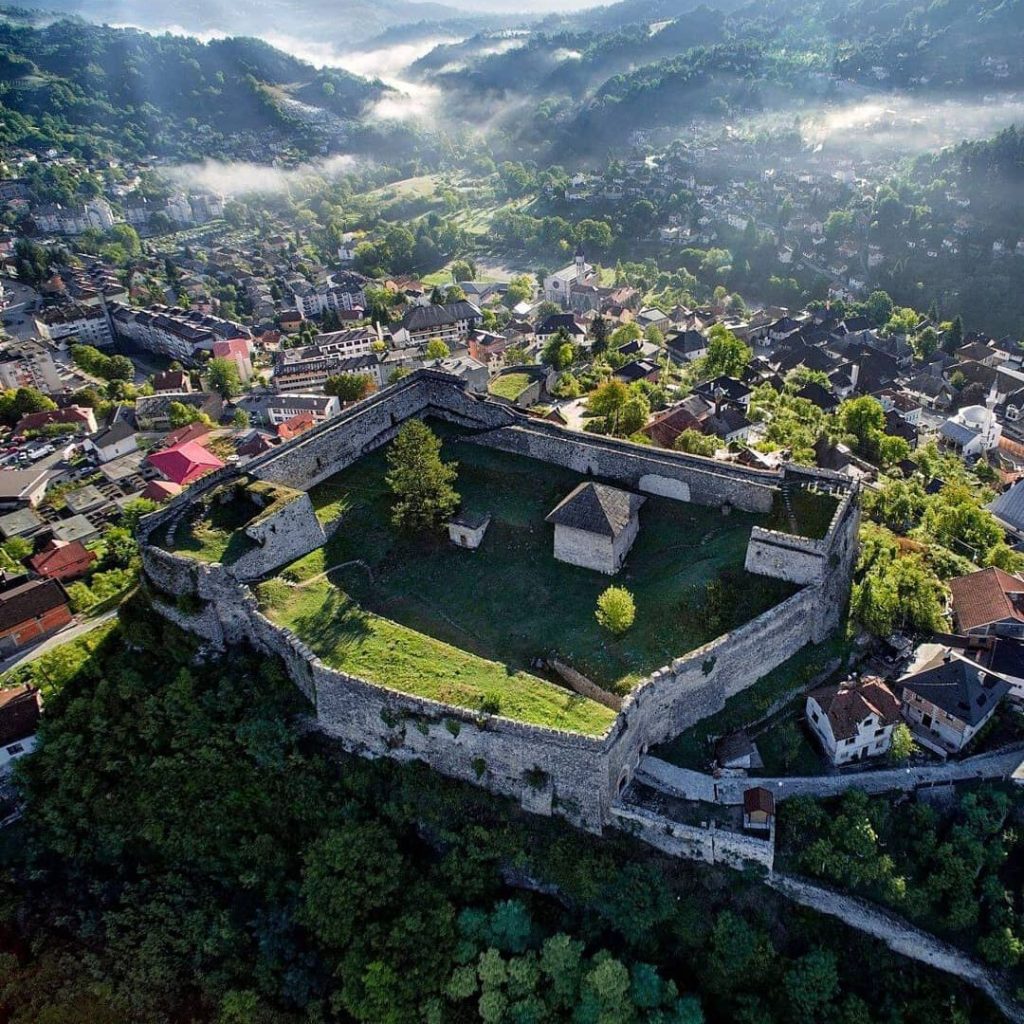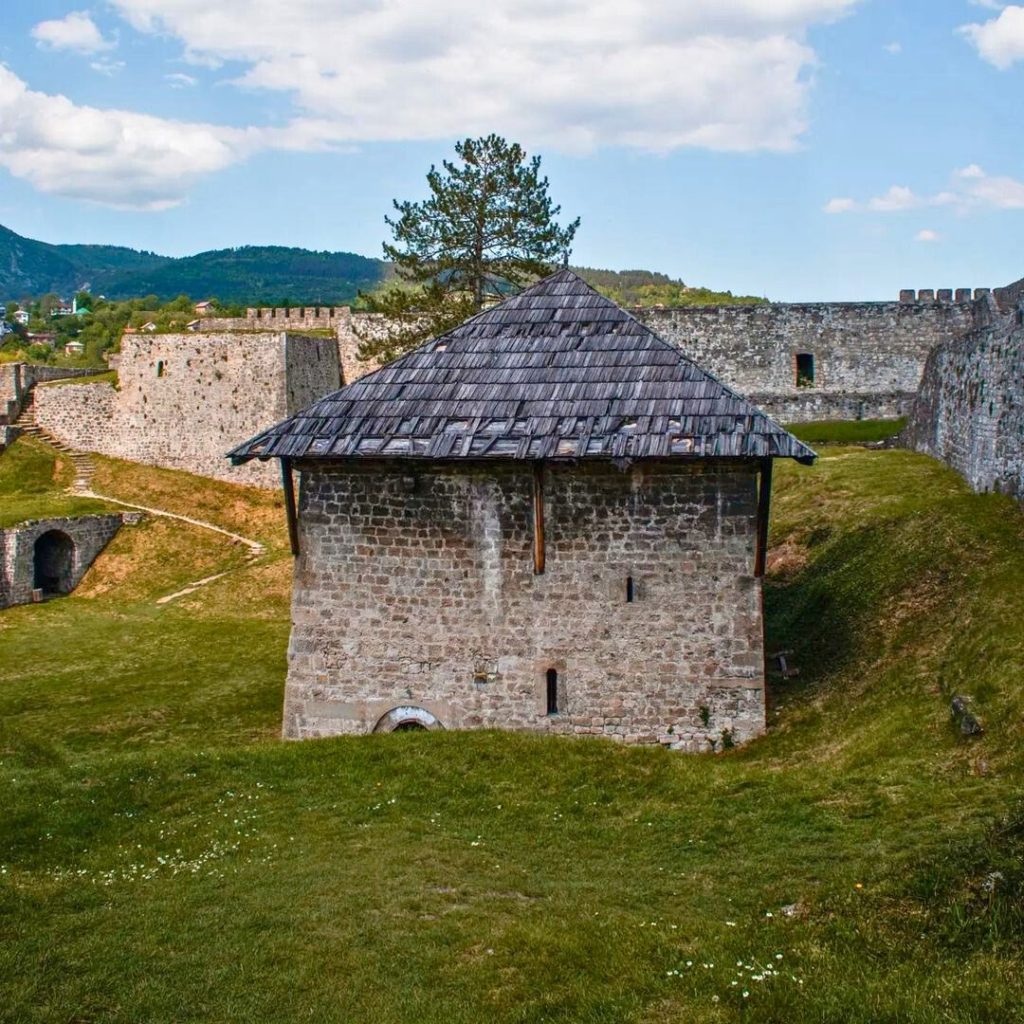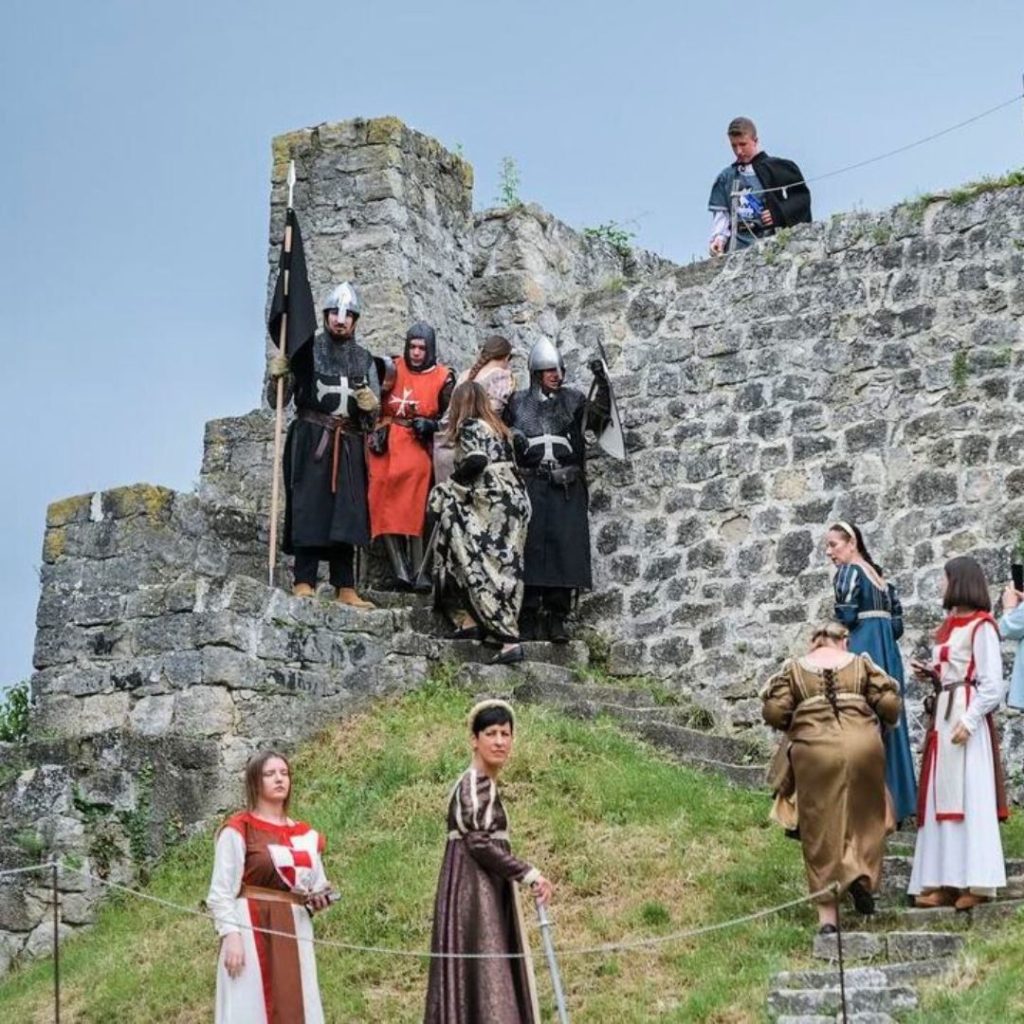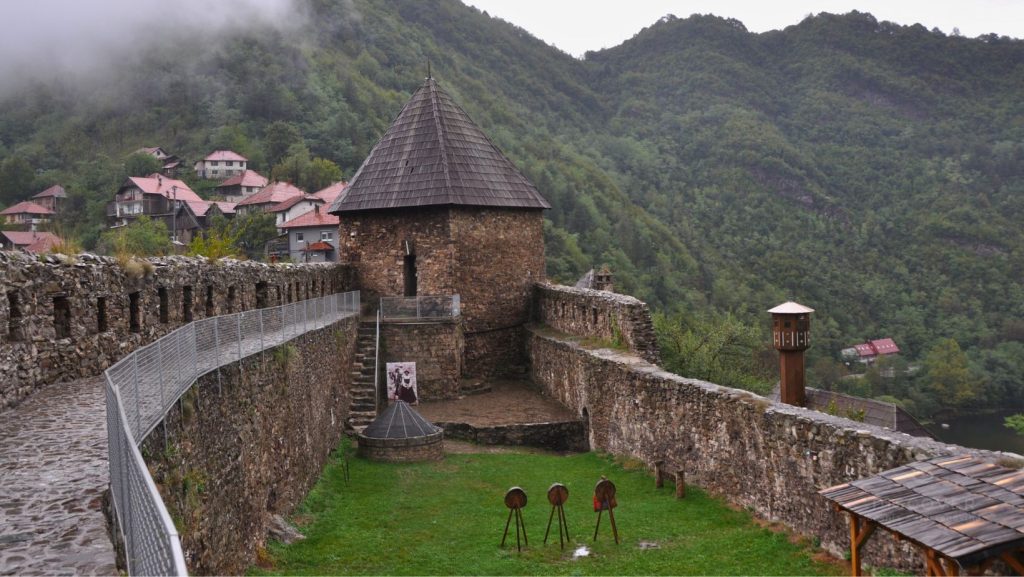
Jajce Fortress, majestically perched on a karst hill above the stunning Pliva River waterfall, forms the historic heart of the town of Jajce. This remarkable structure has been designated a National Monument of Bosnia and Herzegovina, offering visitors a captivating journey through time.
Ancient History
The archaeological layers uncovered at Jajce Fortress reveal a rich tapestry of history:
- Copper Age Settlements: Early human habitation with fascinating artifacts.
- Bronze Age Relics: Traces of ancient cultures and their way of life.
- Roman Period Finds: Evidence of Jajce’s significance during Roman times.
The Fortress of a Royal Capital
Jajce Fortress once served as the stronghold of Jajce, the royal capital and the last bastion of the Kingdom of Bosnia. Despite the passage of centuries, the fortress still crowns the hill at the center of this medieval town.

The towering stone walls and watchtowers now encircle a grassy plateau where the Bosnian royal court once thrived.

Just a short walk from the famed waterfall in Jajce’s center, the fortress offers breathtaking panoramic views of the town and its surroundings, embodying the historical essence of Jajce.
Architectural Evolution through Centuries
While the exact origins of the fortress remain a mystery, it likely existed as a central element of defense by the 13th century. The structure underwent significant modifications and expansions during the 14th and 15th centuries, reflecting the changing needs and fortunes of the time.
Initial Construction
The earliest phase saw the fortress established atop the hill, overseeing the confluence of the Pliva and Vrbas rivers.
Duke Hrvoje Vukčić Hrvatinić’s Era
In the late 14th to early 15th century, enhancements were made under his rule.
Royal Transformation
Following the death of Hrvoje Vukčić in 1416, Jajce became the royal seat.

The mid-15th century saw the addition of a palace and a regal portal adorned with the Bosnian royal coat of arms, echoing the Gothic style seen also in Bobovac Fortress.
Hungarian Dominion

From 1464 to 1527, Jajce Banovina emerged, further refining the city’s defenses.
Ottoman Period
Between 1528 and 1878, the fortress and city took their final form under Ottoman rule.
Austro-Hungarian era

a water reservoir building was constructed near the old powder magazine, marking the last significant addition to the fortress.

A visit to Jajce Fortress is a step back in time. As you wander through its historic grounds, you can almost hear the echoes of the past—royal ceremonies, the clang of armor, and the bustling life of a medieval urban center.

The fortress stands as a testament to Jajce’s unique status among medieval Bosnian towns, being the only fortified urban settlement with all the characteristics of a 15th-century urban center.


